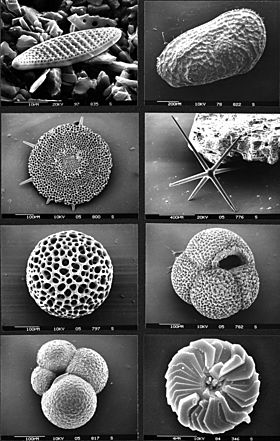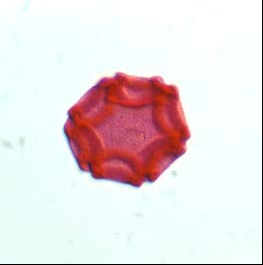Micropaleontology facts for kids

Micropaleontology (also sometimes spelled as micropalaeontology) is the branch of paleontology that studies microfossils. Microfossils are fossils generally not larger than four millimeters, and commonly smaller than one millimeter. A microscope is used to study them. Every kingdom of organisms is represented in the microfossil record. Microfossils can provide important information about the ecology in the past.
People who study micropaleontology are called micropaleontologists. Taxonomy and statistics are important parts of micropaleontology.
Microfossils are most common in sediment that forms beneath water, particularly ocean water or lake water. Very old microfossils may be found in rock. Special techniques are used to separate microfossils from rock. For example, the shells of diatoms and some other organisms are made of silica; other materials in the rock can sometimes be removed with acid, leaving just the silica shells.
Micropaleontology can be divided into four areas of study. The different areas of study use different techniques to separate the microfossils. This is because the microfossils are made of different minerals:
- Silicon dioxide, for example in the shells of diatoms,
- Chalk, for example in the shells of coccoliths and foraminifera,
- Phosphate, for example in bones of vertebrates,
- Organic compounds, for example in pollen and spores.
The area of study for pollen and spores, including fossils, is called palynology.

Images for kids
-
Diatomaceous earth is a soft, siliceous, sedimentary rock made up of microfossils in the form of the frustules (shells) of single cell diatoms. This sample consists of a mixture of centric (radially symmetric) and pennate (bilaterally symmetric) diatoms. This image of diatomaceous earth particles in water is at a scale of 6.236 pixels/μm, the entire image covers a region of approximately 1.13 by 0.69 mm.
-
Fossil nummulitid foraminiferans showing microspheric and megalospheric individuals; Eocene of the United Arab Emirates; scale in mm.
See also
 In Spanish: Micropaleontología para niños
In Spanish: Micropaleontología para niños



